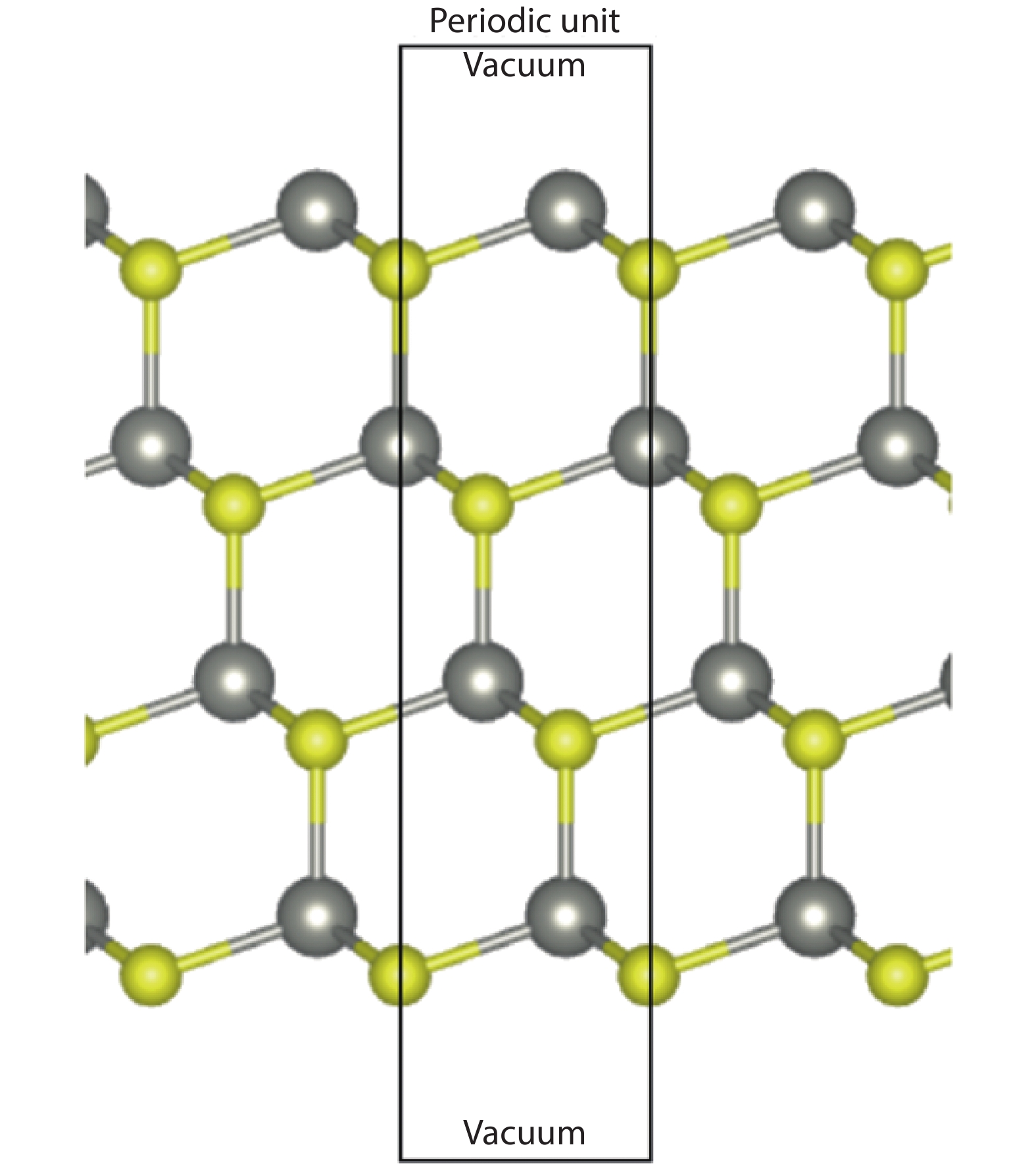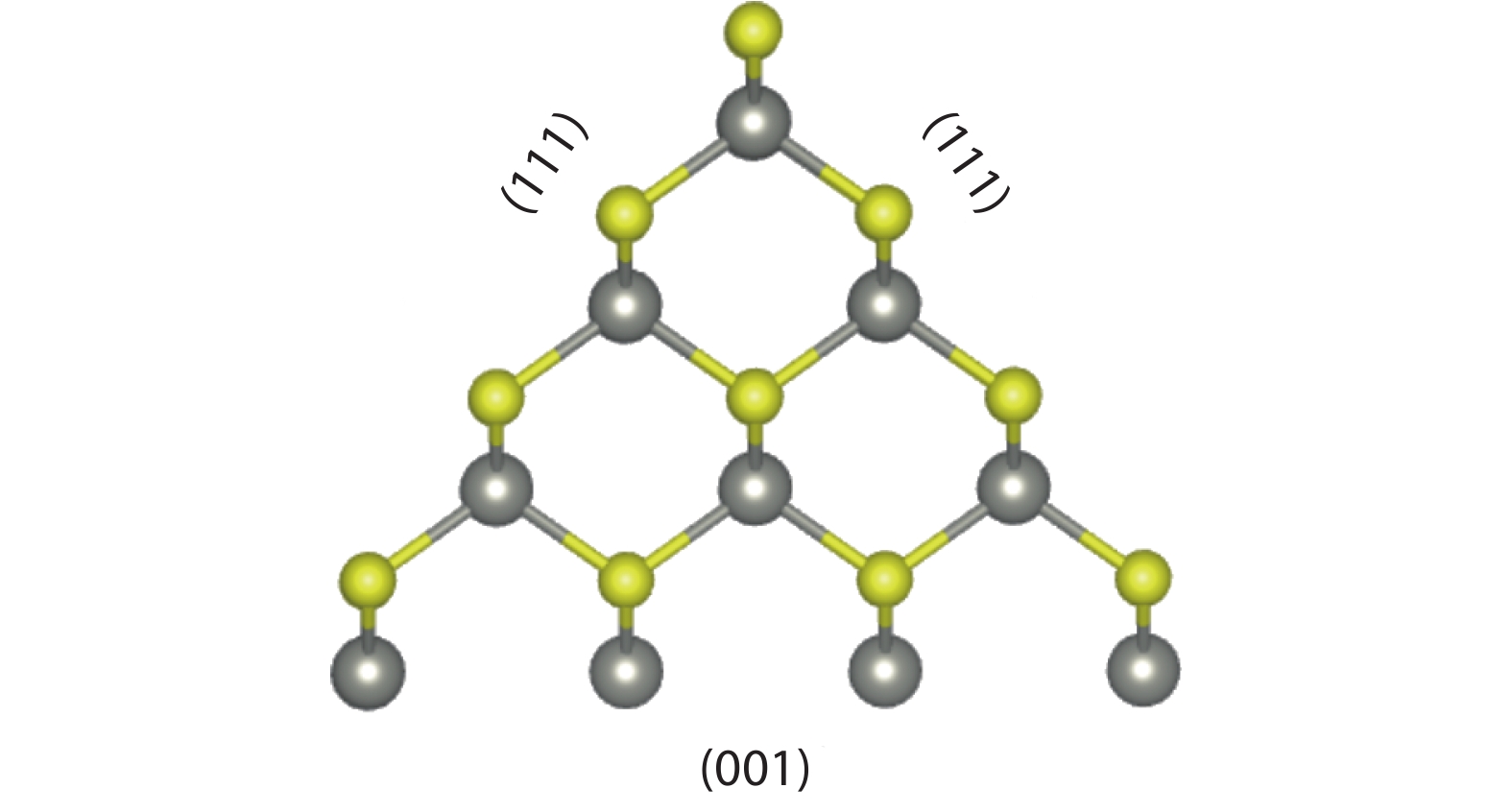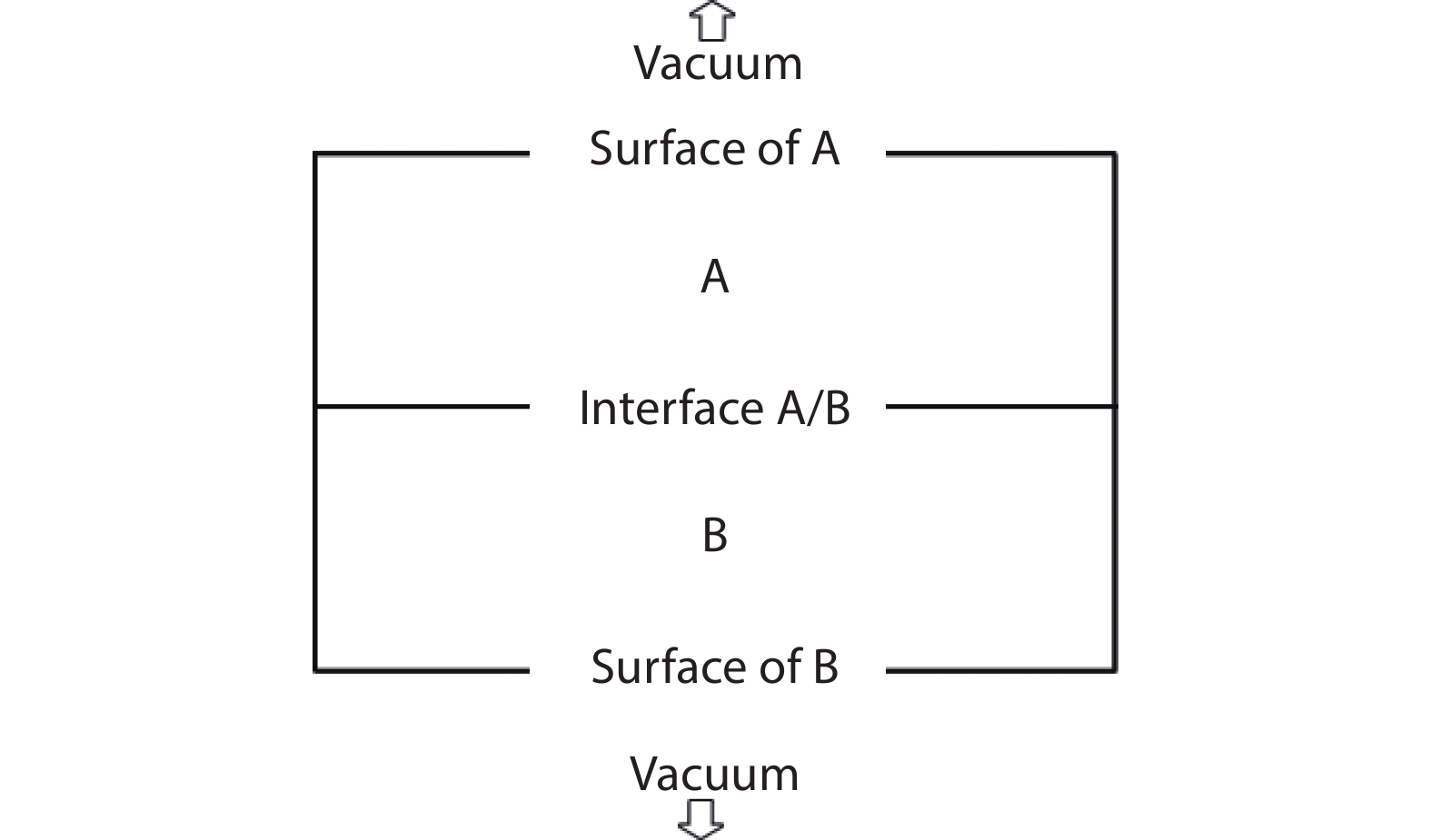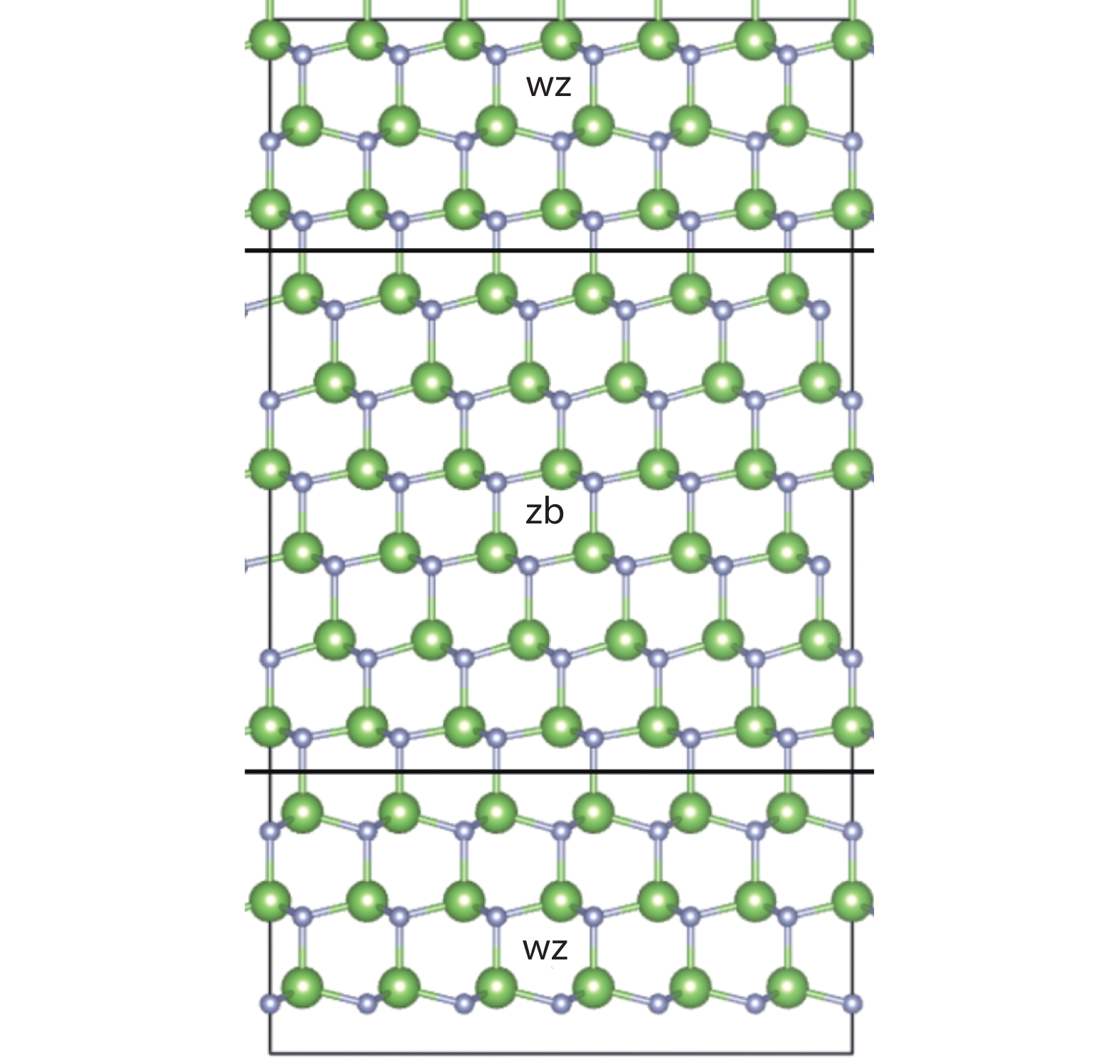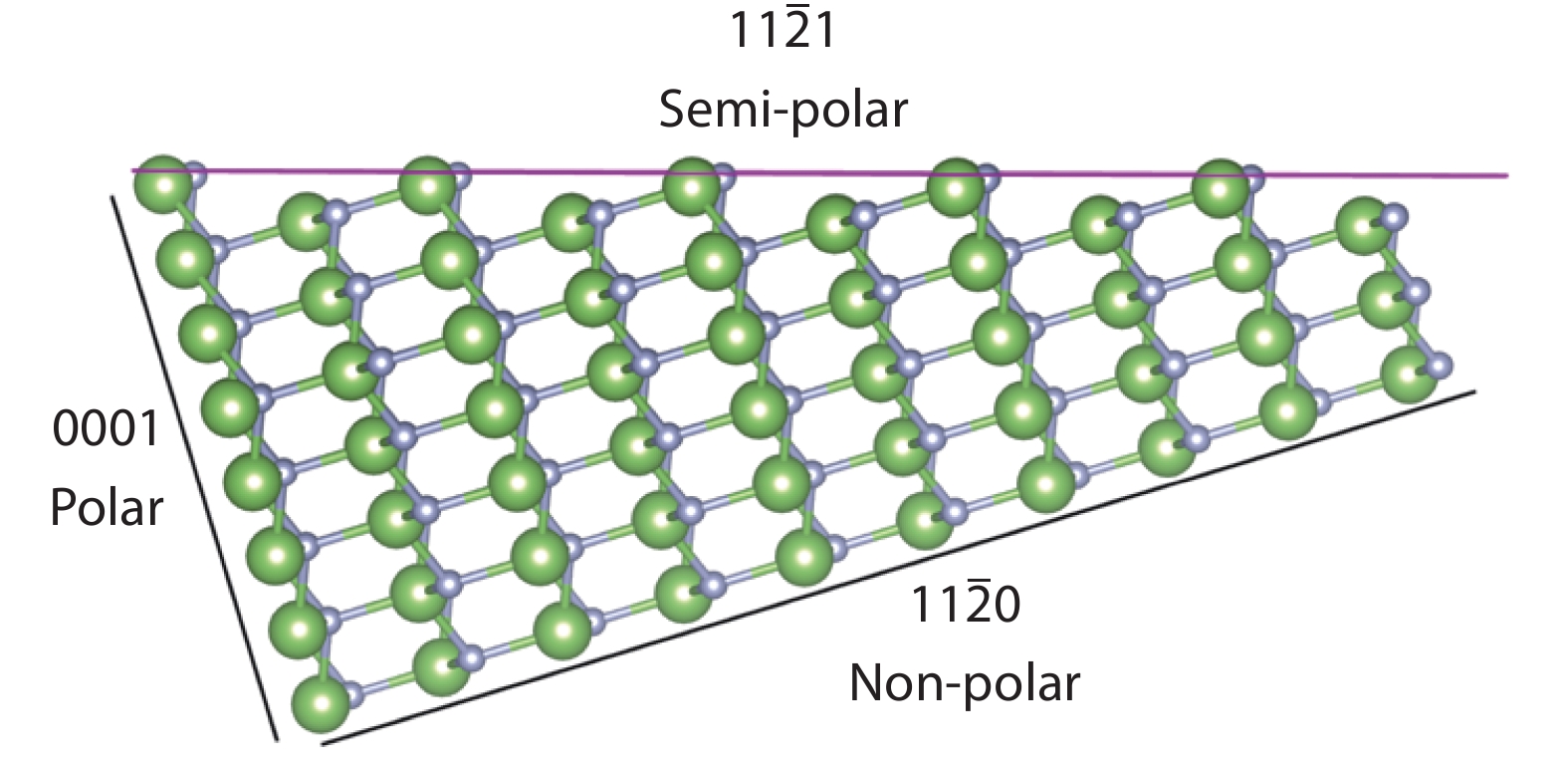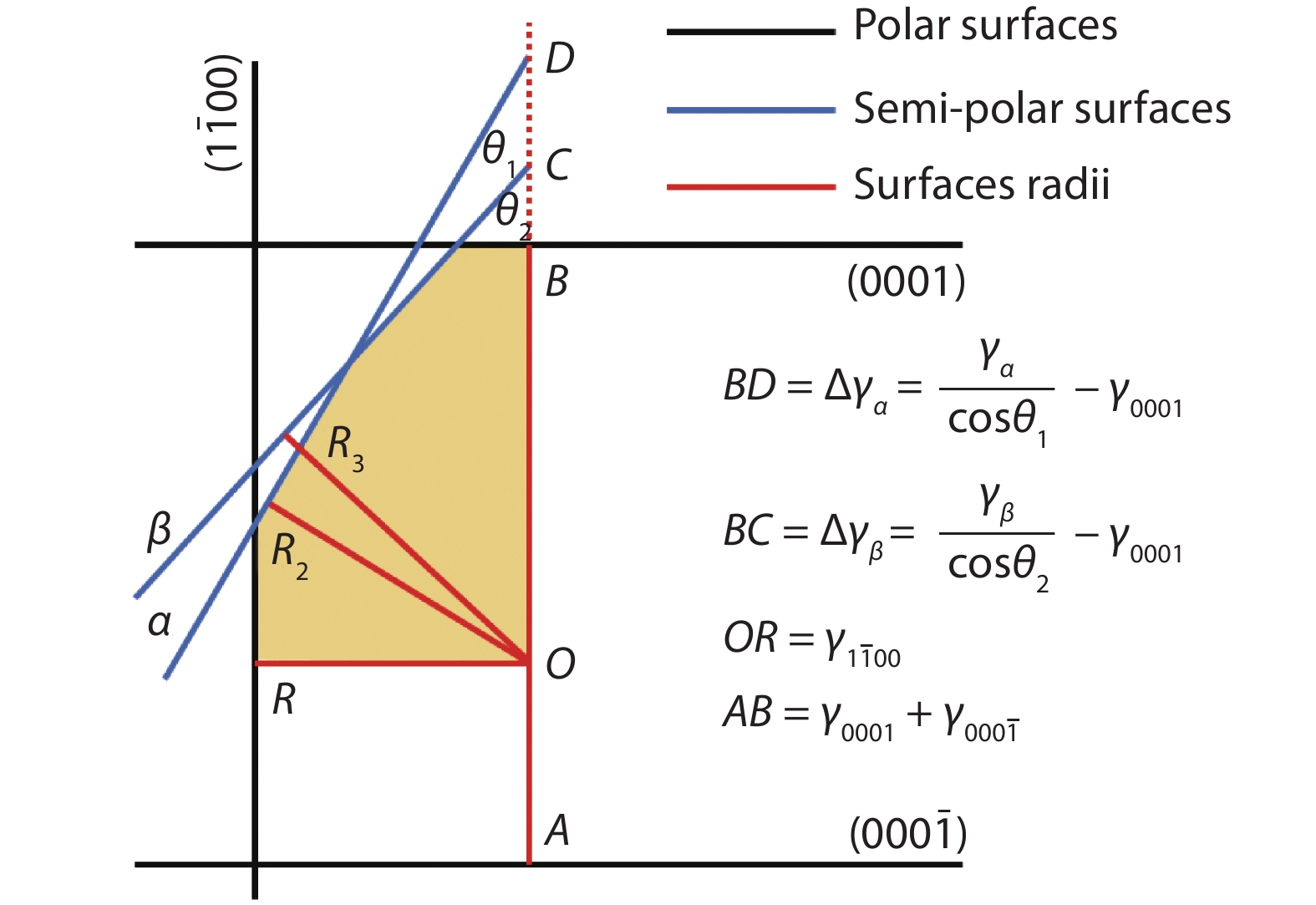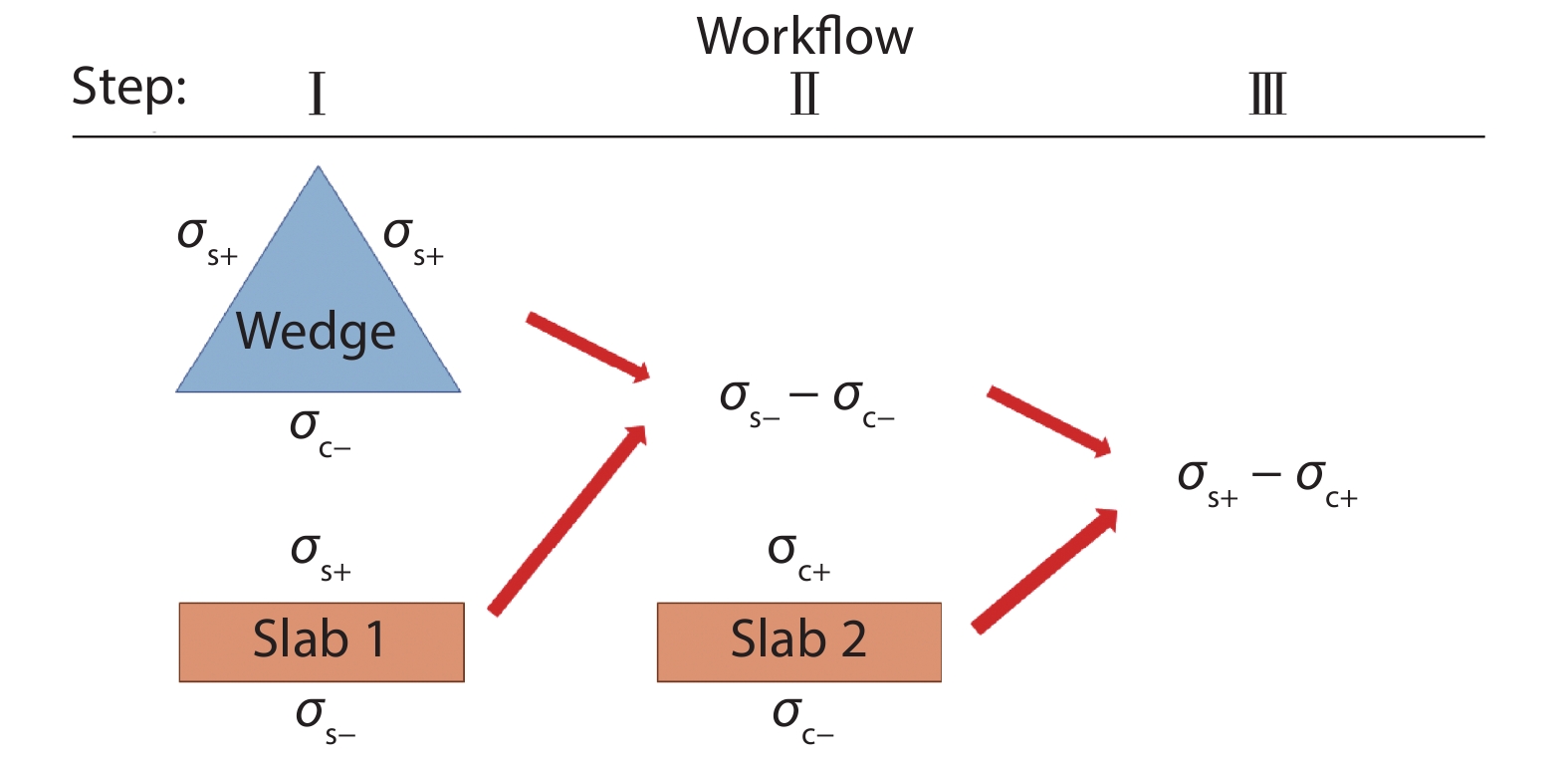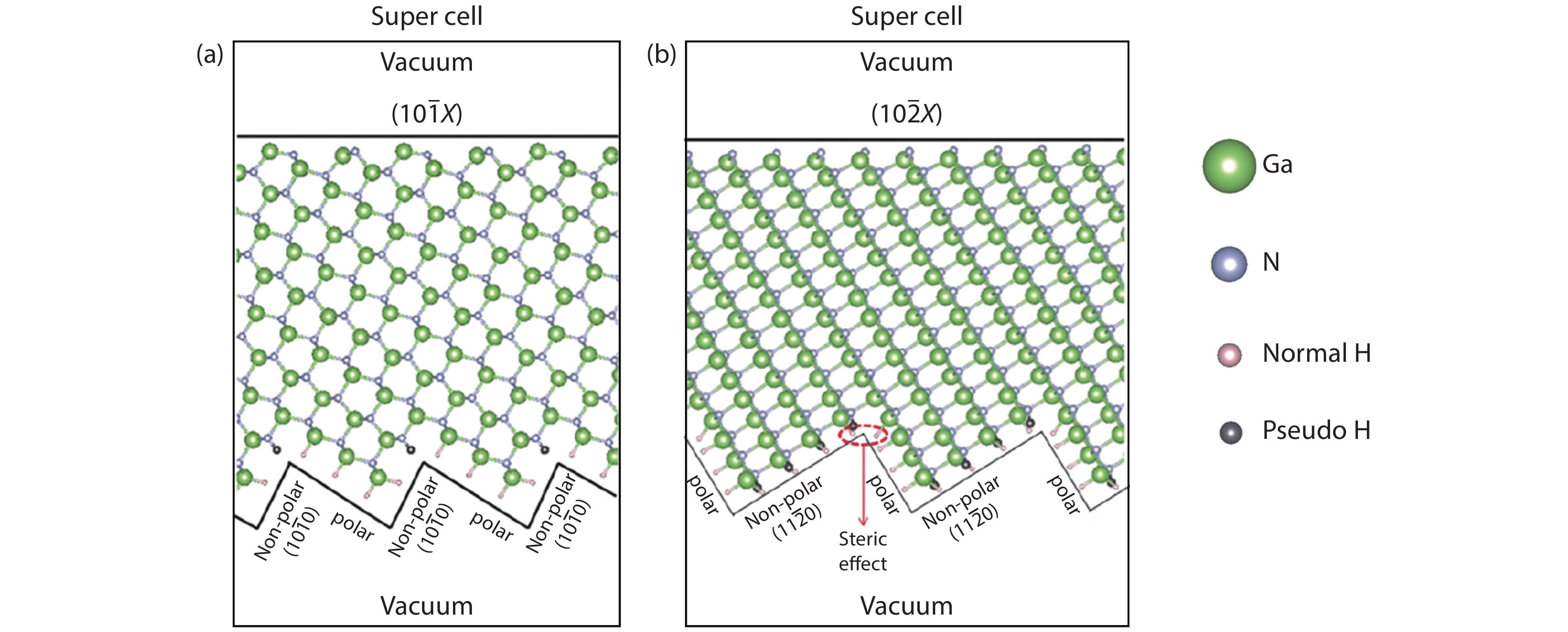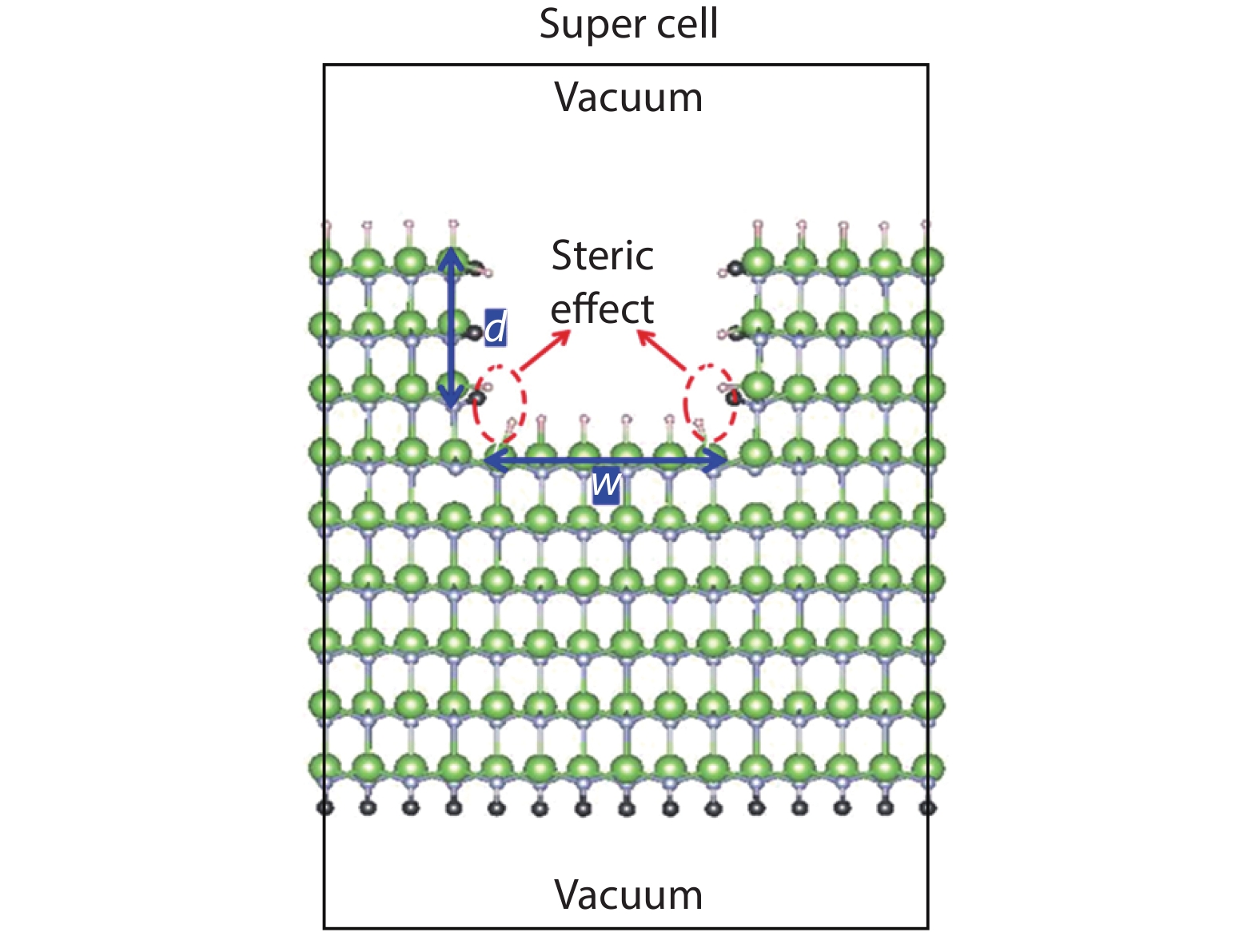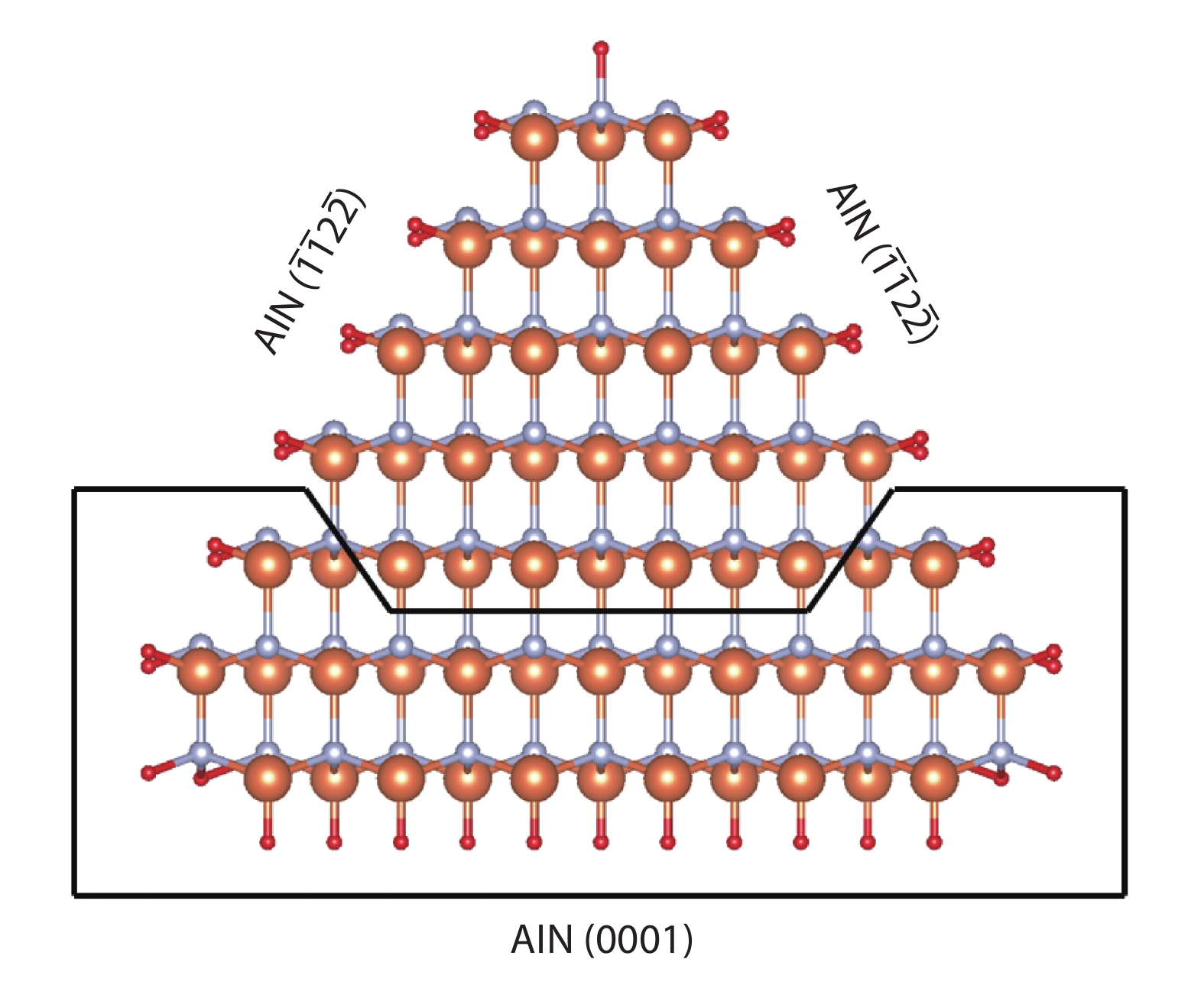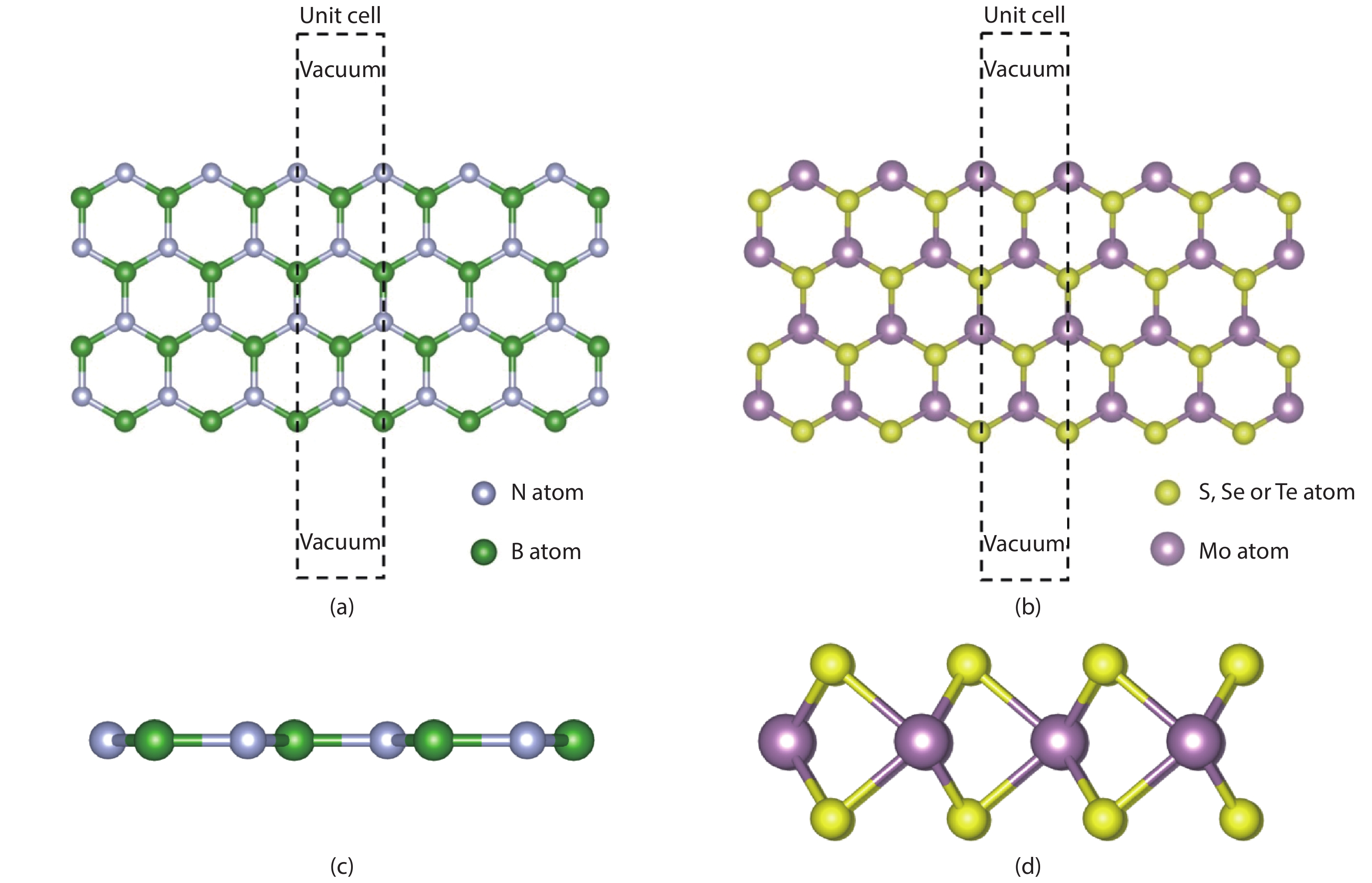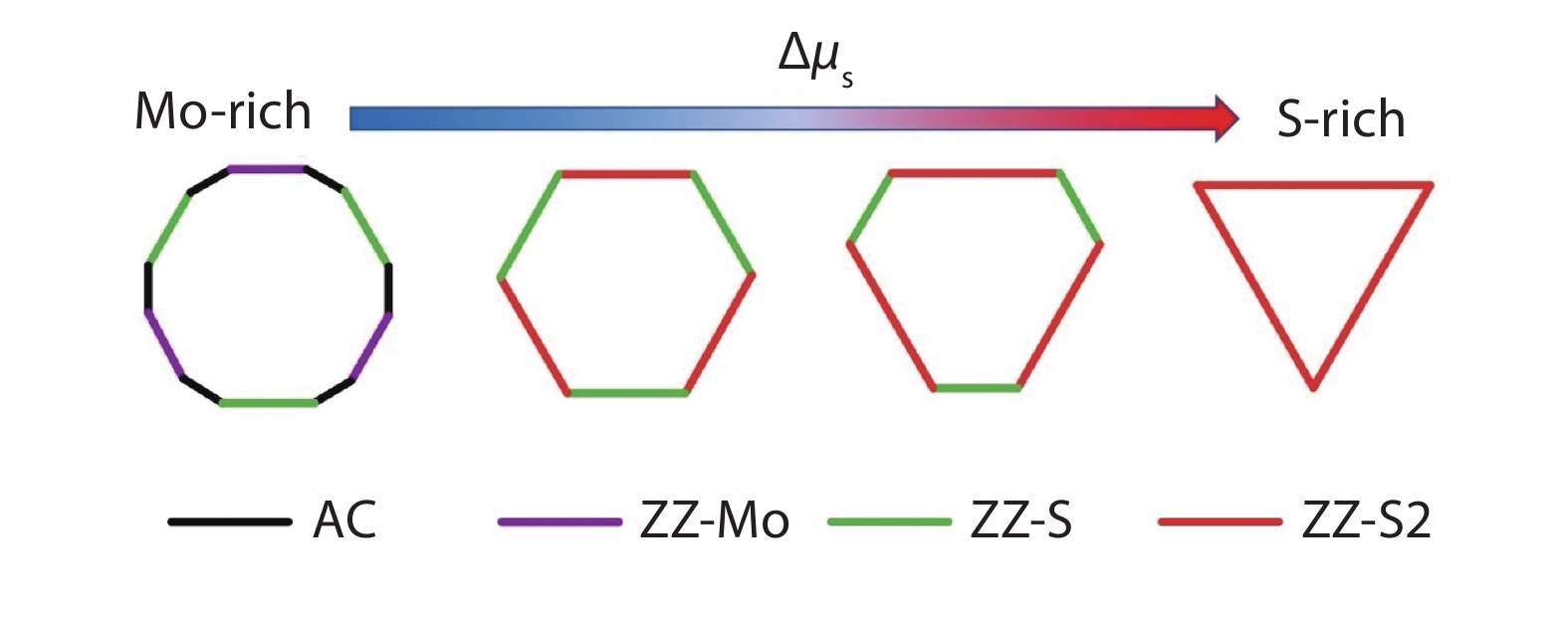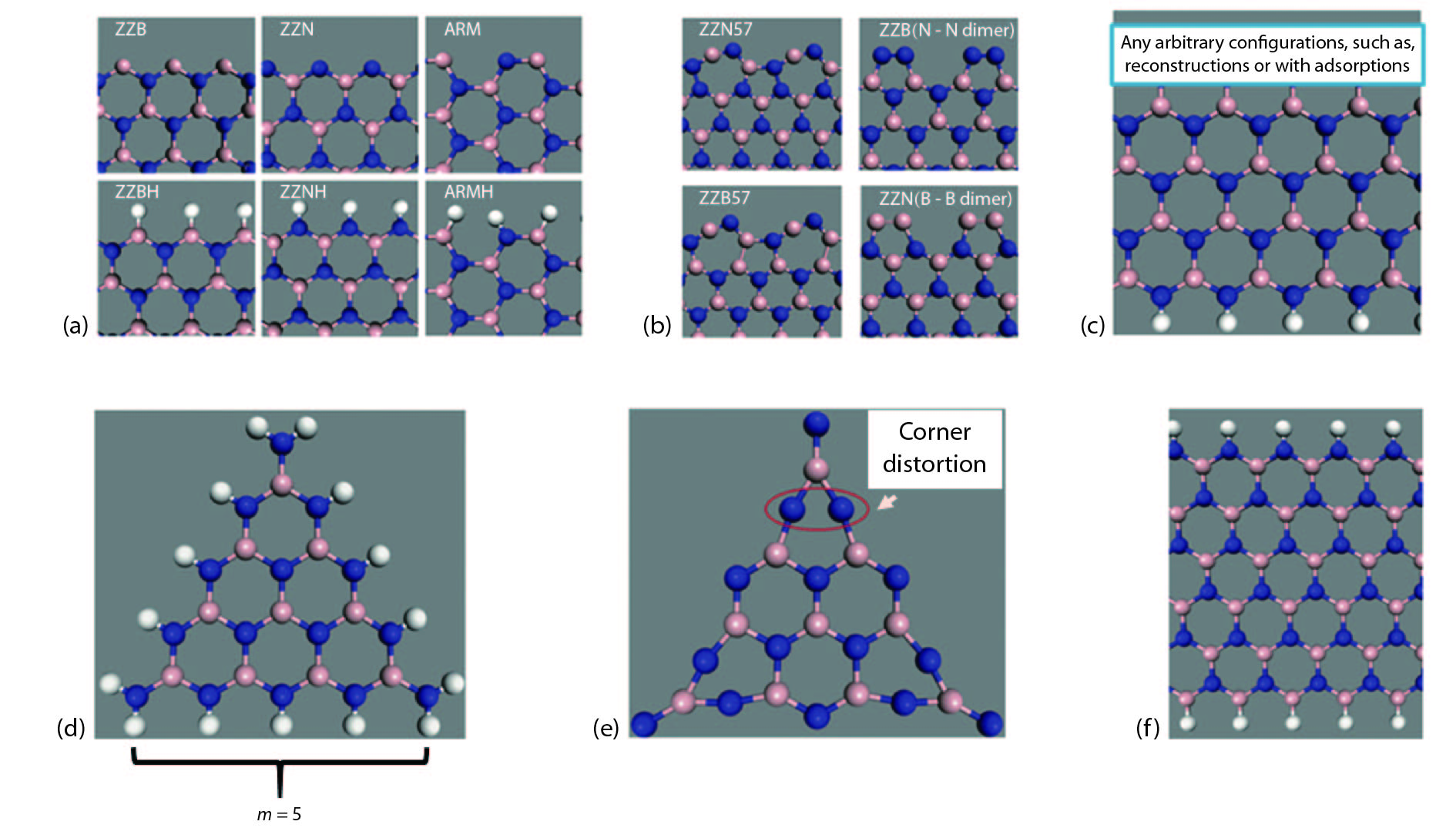| Citation: |
Chuen-Keung Sin, Jingzhao Zhang, Kinfai Tse, Junyi Zhu. A brief review of formation energies calculation of surfaces and edges in semiconductors[J]. Journal of Semiconductors, 2020, 41(6): 061101. doi: 10.1088/1674-4926/41/6/061101
****
C K Sin, J Z Zhang, K Tse, J Y Zhu, A brief review of formation energies calculation of surfaces and edges in semiconductors[J]. J. Semicond., 2020, 41(6): 061101. doi: 10.1088/1674-4926/41/6/061101.
|
A brief review of formation energies calculation of surfaces and edges in semiconductors
DOI: 10.1088/1674-4926/41/6/061101
More Information
-
Abstract
To have a high quality experimental growth of crystals, understanding the equilibrium crystal shape (ECS) in different thermodynamic growth conditions is important. The factor governing the ECS is usually the absolute surface formation energies for surfaces (or edges in 2D) in different orientations. Therefore, it is necessary to obtain an accurate value of these energies in order to give a good explanation for the observation in growth experiment. Historically, there have been different approaches proposed to solve this problem. This paper is going to review these representative literatures and discuss the pitfalls and advantages of different methods.-
Keywords:
- surface,
- first principle,
- morphology
-
References
[1] Bristowe N C, Littlewood P B, Artacho E. Surface defects and conduction in polar oxide heterostructures. J Phys B, 2011, 83, 205405 doi: 10.1103/PhysRevB.83.205405[2] Kahwaji S, Gordon R A, Crozier E D, et al. Surfactant-mediated growth of ferromagnetic Mn-doped Si. Phys Rev B, 2013, 88, 174419 doi: 10.1103/PhysRevB.88.174419[3] Zhang J, Zhao W, Zhu J. Missing links towards understanding the equilibrium shapes of hexagonal boron nitride: algorithm, hydrogen passivation, and temperature effects. Nanoscale, 2018, 10, 17683 doi: 10.1039/C8NR04732D[4] Tang C, Spencer M J S, Barnard A S. Activity of ZnO polar surfaces: an insight from surface energies. Phys Chem Chem Phys, 2014, 16, 22139 doi: 10.1039/C4CP03221G[5] Dingreville R, Qu J, Cherkaoui M. Surface free energy and its effect on the elastic behavior of nano-sized particles, wires and films. J Mech Phys Solids, 2005, 53, 1827 doi: 10.1016/j.jmps.2005.02.012[6] Gibbs J W, The collected works of J. Willard Gibbs. Longmans, Green, 1928[7] Wulff G. Xxv. zur frage der geschwindigkeit des wachsthums und der auflösung der krystallflächen. Zeitschrift für Kristallographie - Crystalline Materials, 1901, 34, 449[8] Curie M P. Sur la formation des cristaux et sur les constantes capillaires de leurs différentes faces. Bull Soc Fr Mineral, 1885, 8, 145[9] Li H, Geelhaar L, Riechert H, et al. Computing equilibrium shapes of wurtzite crystals: The example of GaN. Phys Rev Lett, 2015, 115, 085503 doi: 10.1103/PhysRevLett.115.085503[10] Lang N D, Kohn W. Theory of metal surfaces: Charge density and surface energy. Phys Rev B, 1970, 1, 4555 doi: 10.1103/PhysRevB.1.4555[11] Jaccodine R J. Surface energy of germanium and silicon. J Electrochem Soc, 1963, 110, 524 doi: 10.1149/1.2425806[12] Tyson W R, Miller W A. Surface free energies of solid metals: Estimation from liquid surface tension measurements. Surf Sci, 1977, 62, 267 doi: 10.1016/0039-6028(77)90442-3[13] de Boer F R, Boom R, Mattens W C M, et al. Cohesion in metals: Transition metal alloys. Elsevier Scientific Pub. Co., 1988[14] Bonzel H P, Emundts A. Absolute values of surface and step free energies from equilibrium crystal shapes. Phys Rev Lett, 2000, 84, 5804 doi: 10.1103/PhysRevLett.84.5804[15] Bonzel H P, Nowicki M. Absolute surface free energies of perfect low-index orientations of metals and semiconductors. Phys Rev B, 2004, 70, 245430 doi: 10.1103/PhysRevB.70.245430[16] Niessen A K, Miedema A R, de Boer F R, et al. Enthalpies of formation of liquid and solid binary alloys based on 3d metals: IV. alloys of cobalt. Physica B+C, 1988, 151, 401 doi: 10.1016/0378-4363(88)90296-3[17] Mills K C, Su Y C. Review of surface tension data for metallic elements and alloys: Part 1-pure metals. Int Mater Rev, 2006, 51, 329 doi: 10.1179/174328006X102510[18] Keene B J. Review of data for the surface tension of pure metals. Int Mater Rev, 1993, 38, 157 doi: 10.1179/imr.1993.38.4.157[19] Lee J Y, Punkkinen M, Schönecker S, et al. The surface energy and stress of metals. Surf Sci, 2018, 674, 51 doi: 10.1016/j.susc.2018.03.008[20] Perdew J P, Tran H Q, Smith E D. Stabilized jellium: Structureless pseudopotential model for the cohesive and surface properties of metals. Phys Rev B, 1990, 42, 11627 doi: 10.1103/PhysRevB.42.11627[21] Skriver H L, Rosengaard N M. Surface energy and work function of elemental metals. Phys Rev B, 1992, 46, 7157 doi: 10.1103/PhysRevB.46.7157[22] Erschbaumer H, Freeman A J, Fu C L, et al. Surface states, electronic structure and surface energy of the Ag (001) surface. Surf Sci, 1991, 243, 317 doi: 10.1016/0039-6028(91)90369-4[23] Needs R J, Mansfield M. Calculations of the surface stress tensor and surface energy of the (111) surfaces of iridium, platinum and gold. J Phys Condens Matter, 1989, 1, 41 doi: 10.1088/0953-8984/1/41/006[24] Vitos L, Ruban A, Skriver H, et al. The surface energy of metals. Surf Sci, 1998, 411(1/2), 186 doi: 10.1016/S0039-6028(98)00363-X[25] Galanakis I, Papanikolaou N, Dederichs P H. Applicability of the broken-bond rule to the surface energy of the fcc metals. Surf Sci, 2002, 511, 1 doi: 10.1016/S0039-6028(02)01547-9[26] Methfessel M, Hennig D, Scheffler M. Trends of the surface relaxations, surface energies, and work functions of the 4d transition metals. Phys Rev B, 1992, 46, 4816 doi: 10.1103/PhysRevB.46.4816[27] Rodríguez A M, Bozzolo G, Ferrante J. Multilayer relaxation and surface energies of fcc and bcc metals using equivalent crystal theory. Surf Sci, 1993, 289, 100 doi: 10.1016/0039-6028(93)90891-M[28] Tran R, Xu Z, Radhakrishnan B, et al. Surface energies of elemental crystals. Sci Data, 2016, 3, 160080 doi: 10.1038/sdata.2016.80[29] Hohenberg P, Kohn W. Inhomogeneous electron gas. Phys Rev, 1964, 136, B864 doi: 10.1103/PhysRev.136.B864[30] Kohn W, Sham L J. Self-consistent equations including exchange and correlation effects. Phys Rev, 1965, 140, A1133 doi: 10.1103/PhysRev.140.A1133[31] Harrison W A. Theory of polar semiconductor surfaces. J Vac Sci Technol, 1979, 16, 1492 doi: 10.1116/1.570229[32] Tasker P W. The stability of ionic crystal surfaces. J Phys C, 1979, 12(22), 4977 doi: 10.1088/0022-3719/12/22/036[33] Nakamura S, Mukai T, Senoh M. Candel-class high-brightness InGaN/AlGaN double-heterostructure blue-light-emitting diodes. Appl Phys Lett, 1994, 64, 1687 doi: 10.1063/1.111832[34] Nakamura S, Senoh M, Nagahama S I, et al. InGaN-based multi-quantum-well-structure laser diodes. Jpn J Appl Phys, 1996, 35, L74 doi: 10.1143/JJAP.35.L74[35] Nakamura S. The roles of structural imperfections in InGaN-based blue light-emitting diodes and laser diodes. Science, 1998, 281, 956 doi: 10.1126/science.281.5379.956[36] Nakamura S, Pearton S, Fasol G. The blue laser diode: The complete story. Springer, 2000[37] Bagnall D M, Chen Y F, Zhu Z, et al. Optically pumped lasing of zno at room temperature. Appl Phys Lett, 1997, 70, 2230 doi: 10.1063/1.118824[38] Özgür Ü, Alivov Y I, Liu C, et al. A comprehensive review of ZnO materials and devices. J Appl Phys, 2005, 99, 041301 doi: 10.1063/1.1992666[39] Guo L, Ji Y L, Xu H B, et al. Regularly shaped, single-crystalline ZnO nanorods with wurtzite structure. J Am Chem Soc, 2002, 124, 14864 doi: 10.1021/ja027947g[40] Liu B, Bando Y, Tang C, et al. Wurtzite-type faceted single-crystalline gan nanotubes. Appl Phys Lett, 2006, 88, 093120 doi: 10.1063/1.2182065[41] Zhang Y, Zhu J. Surfactant antimony enhanced indium incorporation on ingan (000-1) surface: A dft study. J Cryst Growth, 2016, 438, 43 doi: 10.1016/j.jcrysgro.2015.12.034[42] Feibelman P J. Static quantum-size effects in thin crystalline, simple-metal films. Phys Rev B, 1983, 27, 1991 doi: 10.1103/PhysRevB.27.1991[43] Chetty N, Martin R M. Determination of integrals at surfaces using the bulk crystal symmetry. Phys Rev B, 1991, 44, 5568 doi: 10.1103/PhysRevB.44.5568[44] Zhang S B, Wei S H. Surface energy and the common dangling bond rule for semiconductors. Phys Rev Lett, 2004, 92, 086102 doi: 10.1103/PhysRevLett.92.086102[45] Rempel J Y, Trout B L, Bawendi M G, et al. Properties of the CdSe (0001), (000-1), and (11-20) single crystal surfaces: Relaxation, reconstruction, and adatom and admolecule adsorption. J Phys Chem B, 2005, 109, 19320 doi: 10.1021/jp053560z[46] Jenichen A, Engler C, Rauschenbach B. Comparison of wurtzite and zinc-blende GaAs surfaces as possible nanowire side walls: Dft stability calculations. Surf Sci, 2013, 613, 74 doi: 10.1016/j.susc.2013.03.012[47] Zhang Y, Zhang J, Tse K, et al. Pseudo-hydrogen passivation: A novel way to calculate absolute surface energy of zinc blende (111)/(-1-1-1) surface. Sci Rep, 2016, 6, 20055 doi: 10.1038/srep20055[48] Zhang Y, Zhang J, Zhu J. Stability of wurtzite semipolar surfaces: Algorithms and practices. Phys Rev Mater, 2018, 2, 073401 doi: 10.1103/PhysRevMaterials.2.073401[49] Seta Y, Akiyama T, Pradipto A M, et al. Absolute surface energies of semipolar planes of aln during metalorganicvapor phase epitaxy growth. J Cryst Growth, 2019, 510, 7 doi: 10.1016/j.jcrysgro.2018.12.011[50] Mukherjee R, Bhowmick S. Edge stabilities of hexagonal boron nitride nanoribbons: A first-principles study. J Chem Theory Comput, 2011, 7, 720 doi: 10.1021/ct1006345[51] Cao D, Shen T, Liang P, et al. Role of chemical potential in flake shape and edge properties of monolayer MoS2. J Phys Chem C, 2015, 119, 4294 doi: 10.1021/jp5097713[52] Rapcewicz K, Chen B, Yakobson B, et al. Consistent methodology for calculating surface and interface energies. Phys Rev B, 1998, 57, 7281 doi: 10.1103/PhysRevB.57.7281[53] Shiraishi K. A new slab model approach for electronic structure calculation of polar semiconductor surface. J Phys Soc Jpn, 1990, 59, 3455 doi: 10.1143/JPSJ.59.3455[54] Chetty N, Martin R M. First-principles energy density and its applications to selected polar surfaces. Phys Rev B, 1992, 45, 6074 doi: 10.1103/PhysRevB.45.6074[55] Appelbaum J A, Baraff G A, Hamann D R. GaAs(100): Its spectrum, effective charge, and reconstruction patterns. Phys Rev B, 1976, 14, 1623 doi: 10.1103/PhysRevB.14.1623[56] Chetty N, Martin R M. GaAs (111) and (1’-.2m”.3m’ ’.2m”-.3m’ 1’-.2m”.3m’ ’.2m”-.3m’ 1’-.2m”.3m’ ’.2m”-.3m’) surfaces and the GaAs/AlAs (111) heterojunction studied using a local energy density. Phys Rev B, 1992, 45, 6089 doi: 10.1103/PhysRevB.45.6089[57] Moll N, Kley A, Pehlke E, et al. GaAs equilibrium crystal shape from first principles. Phys Rev B, 1996, 54, 8844 doi: 10.1103/PhysRevB.54.8844[58] Manna L, Wang, Cingolani R, et al. First-principles modeling of unpassivated and surfactant-passivated bulk facets of wurtzite CdSe: A model system for studying the anisotropic growth of CdSe nanocrystals. J Phys Chem B, 2005, 109, 6183 doi: 10.1021/jp0445573[59] Dreyer C E, Janotti A, Van de Walle C G. Absolute surface energies of polar and nonpolar planes of GaN. Phys Rev B, 2014, 89, 081305 doi: 10.1103/PhysRevB.89.081305[60] Zhang J, Zhang Y, Tse K, et al. New approaches for calculating absolute surface energies of wurtzite (0001)/(000-1): A study of ZnO and GaN. J Appl Phys, 2016, 119, 205302 doi: 10.1063/1.4952395[61] Zhang J, Zhang Y, Tse K, et al. Hydrogen-surfactant-assisted coherent growth of GaN on ZnO substrate. Phys Rev Mater, 2018, 2, 013403 doi: 10.1103/PhysRevMaterials.2.013403[62] Akiyama T, Nakane H, Nakamura K, et al. Effective approach for accurately calculating individual energy of polar heterojunction interfaces. Phys Rev B, 2016, 94, 115302 doi: 10.1103/PhysRevB.94.115302[63] Pezold J V, Bristowe P D. Atomic structure and electronic properties of the GaN/ZnO (0001) interface. J Mater Sci, 2005, 40, 3051 doi: 10.1007/s10853-005-2664-6[64] Yankovich A B, Puchala B, Wang F, et al. Stable p-type conduction from Sb-decorated head-to-head basal plane inversion domain boundaries in ZnO nanowires. Nano Lett, 2012, 12, 1311 doi: 10.1021/nl203848t[65] Wong M, Tse K, Zhu J. New types of CZTS3112 grain boundaries: Algorithms to passivation. J Phys Chem C, 2018, 122, 7759 doi: 10.1021/acs.jpcc.8b00811[66] Dai X, Deng Y, Peng X, et al. Quantum-dot light-emitting diodes for large-area displays: Towards the dawn of commercialization. Adv Mater, 2017, 29, 1607022 doi: 10.1002/adma.201607022[67] Jang E, Jun S, Jang H, et al. White-light-emitting diodes with quantum dot color converters for display backlights. Adv Mater, 2010, 22, 3076 doi: 10.1002/adma.201000525[68] Masui H, Nakamura S, DenBaars S P, et al. Nonpolar and semipolar III-nitride light-emitting diodes: Achievements and challenges. IEEE Trans Electron Devices, 2010, 57, 88 doi: 10.1109/TED.2009.2033773[69] Ho I, Stringfellow G B. Solid phase immiscibility in GaInN. Appl Phys Lett, 1996, 69, 2701 doi: 10.1063/1.117683[70] Matsuoka T. Unstable mixing region in wurtzite In1– x–yGaxAlyN. J Cryst Growth, 1998, 189–190, 19 doi: 10.1016/S0022-0248(98)00148-1[71] Koukitu A, Kumagai Y. Thermodynamic analysis of group III nitrides grown by metal-organic vapour-phase epitaxy (MOVPE), hydride (or halide) vapour-phase epitaxy (HVPE) and molecular beam epitaxy (MBE). J Phys Condens Matter, 2001, 13, 32 doi: 10.1088/0953-8984/13/32/303[72] Funato M, Ueda M, Kawakami Y, et al. Blue, green, and amber InGaN/GaN light-emitting diodes on semipolar {11-22} GaN bulk substrates. Jpn J Appl Phys, 2006, 45, 24 doi: 10.1143/JJAP.45.L659[73] Wunderer T, Brückner P, Neubert B, et al. Bright semipolar GaInN/GaN blue light emitting diode on side facets of selectively grown GaN stripes. Appl Phys Lett, 2006, 89, 041121 doi: 10.1063/1.2240307[74] Sato H, Chung R B, Hirasawa H, et al. Optical properties of yellow light-emitting diodes grown on semipolar (11-22) bulk GaN substrates. Appl Phys Lett, 2008, 92, 221110 doi: 10.1063/1.2938062[75] Northrup J E. GaN and InGaN (11-22) surfaces: Group-III adlayers and indium incorporation. Appl Phys Lett, 2009, 95, 133107 doi: 10.1063/1.3240401[76] Zhao Y, Yan Q, Huang C Y, et al. Indium incorporation and emission properties of nonpolar and semipolar InGaN quantum wells. Appl Phys Lett, 2012, 100, 201108 doi: 10.1063/1.4719100[77] Monavarian M, Metzner S, Izyumskaya N, et al. Indium-incorporation efficiency in semipolar (11-22) oriented InGaN-based light emitting diodes. SPIE OPTO, 2015, 9363, 2P[78] Bhat R, Guryanov G M. Experimental study of the orientation dependence of indium incorporation in GaInN. J Cryst Growth, 2016, 433, 7 doi: 10.1016/j.jcrysgro.2015.09.022[79] Wang T. Topical review: Development of overgrown semi-polar GaN for high efficiency green/yellow emission. Semicond Sci Technol, 2016, 31, 093003 doi: 10.1088/0268-1242/31/9/093003[80] Takeuchi T, Amano H, Akasaki I. Theoretical study of orientation dependence of piezoelectric effects in wurtzite strained GaInN/GaN heterostructures and quantum wells. Jpn J Appl Phys, 2000, 39, 413 doi: 10.1143/JJAP.39.413[81] Miller D A B, Chemla D S, Damen T C, et al. Band-edge electroabsorption in quantum well structures: The quantum-confined stark effect. Phys Rev Lett, 1984, 53, 2173 doi: 10.1103/PhysRevLett.53.2173[82] Takeuchi T, Sota S, Katsuragawa M, et al. Quantum-confined stark effect due to piezoelectric fields in GaInN strained quantum wells. Jpn J Appl Phys, 1997, 36, L382 doi: 10.1143/JJAP.36.L382[83] Baker T J, Haskell B A, Wu F, et al. Characterization of planar semipolar gallium nitride films on spinel substrates. Jpn J Appl Phys, 2005, 44, L920 doi: 10.1143/JJAP.44.L920[84] Herring C. Some theorems on the free energies of crystal surfaces. Phys Rev, 1951, 82, 87 doi: 10.1103/PhysRev.82.87[85] Du D, Srolovitz D J, Coltrin M E, et al. Systematic prediction of kinetically limited crystal growth morphologies. Phys Rev Lett, 2005, 95, 155503 doi: 10.1103/PhysRevLett.95.155503[86] Enya Y, Yoshizumi Y, Kyono T, et al. 531 nm green lasing of ingan based laser diodes on semi-polar 20-21 free-standing GaN substrates. Appl Phys Express, 2009, 2, 082101 doi: 10.1143/APEX.2.082101[87] Liu C, Šatka A, Krishnan L J, et al. Light emission from InGaN quantum wells grown on the facets of closely spaced GaN nano-pyramids formed by nano-imprinting. Appl Phys Express, 2009, 2, 121002 doi: 10.1143/APEX.2.121002[88] Bergbauer W, Strassburg M, Kölper C, et al. Continuous-flux movpe growth of position-controlled N-face GaN nanorods and embedded ingan quantum wells. Nanotechnology, 2010, 21, 305201 doi: 10.1088/0957-4484/21/30/305201[89] Leung B, Sun Q, Yerino C D, et al. Using the kinetic wulff plot to design and control nonpolar and semipolar GaN heteroepitaxy. Semicond Sci Technol, 2012, 27, 024005 doi: 10.1088/0268-1242/27/2/024005[90] Ko Y H, Song J, Leung B, et al. Multi-color broadband visible light source via GaN hexagonal annular structure. Sci Rep, 2014, 4, 5514 doi: 10.1038/srep05514[91] Foltynski B, Garro N, Vallo M, et al. The controlled growth of GaN microrods on Si (111) substrates by MOCVD. J Cryst Growth, 2015, 414, 200 doi: 10.1016/j.jcrysgro.2014.10.047[92] Jindal V, Shahedipour-Sandvik F. Theoretical prediction of GaN nanostructure equilibrium and nonequilibrium shapes. J Appl Phys, 2009, 106, 083115 doi: 10.1063/1.3253575[93] Mandl M, Wang X, Schimpke T, et al. Group III nitride core-shell nano- and microrods for optoelectronic applications. Phys Status Solidi RRL, 2013, 7, 800 doi: 10.1002/pssr.201307250[94] Pashley M D. Electron counting model and its application to island structures on molecular-beam epitaxy grown GaAs (001) and ZnSe (001). Phys Rev B, 1989, 40, 10481 doi: 10.1103/PhysRevB.40.10481[95] Kusaba A, Kangawa Y, Kempisty P, et al. Thermodynamic analysis of (0001) and (000-1) GaN metalorganic vapor phase epitaxy. Jpn J Appl Phys, 2017, 56, 070304 doi: 10.7567/JJAP.56.070304[96] Akiyama T, Seta Y, Nakamura K, et al. Modified approach for calculating individual energies of polar and semipolar surfaces of group-III nitrides. Phys Rev Mater, 2019, 3, 023401 doi: 10.1103/PhysRevMaterials.3.023401[97] Zhang X, Xin J, Ding F. The edges of graphene. Nanoscale, 2019, 5, 2556 doi: 10.1039/C3NR34009K[98] Artyukhov V I, Liu Y, Yakobson B I. Equilibrium at the edge and atomistic mechanisms of graphene growth. Proc Natl Acad Sci USA, 2012, 109, 15136 doi: 10.1073/pnas.1207519109[99] Gan C K, Srolovitz D J. First-principles study of graphene edge properties and flake shapes. Phys Rev B, 2010, 81, 125445 doi: 10.1103/PhysRevB.81.125445[100] Artyukhov V I, Hao Y, Ruoff R S, et al. Breaking of symmetry in graphene growth on metal substrates. Phys Rev Lett, 2015, 114, 115502 doi: 10.1103/PhysRevLett.114.115502[101] Okada S. Energetics of nanoscale graphene ribbons: Edge geometries and electronic structures. Phys Rev B, 2008, 77, 041408 doi: 10.1103/PhysRevB.77.041408[102] Novoselov K S, Mishchenko A, Carvalho A, et al. 2D materials and van der waals heterostructures. Science, 2016, 353, aac9439 doi: 10.1126/science.aac9439[103] Stehle Y, Meyer H M, Unocic R R, et al. Synthesis of hexagonal boron nitride monolayer: Control of nucleation and crystal morphology. Chem Mater, 2015, 27, 8041 doi: 10.1021/acs.chemmater.5b03607[104] Yang S Y, Shim G W, Seo S B, et al. Effective shape-controlled growth of monolayer MoS2 flakes by powderbased chemical vapor deposition. Nano Res, 2017, 10, 255 doi: 10.1007/s12274-016-1284-6[105] Chen Y, Cui P, Ren X, et al. Fabrication of MoSe2 nanoribbons via an unusual morphological phase transition. Nat Commun, 2017, 8, 15135 doi: 10.1038/ncomms15135[106] Li J, Hu Z, Yi Y, et al. Hexagonal boron nitride growth on Cu–Si alloy: Morphologies and large domains. Small, 2019, 15, 1805188 doi: 10.1002/smll.201805188[107] Liu Y, Bhowmick S, Yakobson B I. Bn white graphene with ”colorful” edges: The energies and morphology. Nano Lett, 2011, 11, 3113 doi: 10.1021/nl2011142[108] Machlin E. Aspects of thermodynamics and kinetics relevant to materials science. Elsevier Science, 2007[109] Tse K, Wong M, Zhang Y, et al. Defect properties of Na and K in Cu2ZnSnS4 from hybrid functional calculation. J Appl Phys, 2018, 124, 165701 doi: 10.1063/1.5046734[110] Gao J, Yip J, Zhao J, et al. Graphene nucleation on transition metal surface: Structure transformation and role of the metal step edge. J Am Chem Soc, 2011, 133, 5009 doi: 10.1021/ja110927p[111] Coraux J, N’Diaye A T, Engler M, et al. Growth of graphene on Ir (111). New J Phys, 2009, 11, 039801 doi: 10.1088/1367-2630/11/3/039801[112] Song X. Chemical vapor deposition growth of large-scale hexagonal boron nitride with controllable orientation. Nano Res, 2015, 8, 3164 doi: 10.1007/s12274-015-0816-9[113] Huang B, Lee H, Gu B L, et al. Edge stability of boron nitride nanoribbons and its application in designing hybrid bnc structures. Nano Res, 2012, 5, 62 doi: 10.1007/s12274-011-0185-y[114] Du A, Chen Y, Zhu Z, et al. Dots versus antidots: Computational exploration of structure, magnetism, and half metallicity in boron-nitride nanostructures. J Am Chem Soc, 2009, 131, 17354 doi: 10.1021/ja9071942[115] Van der Zande A M, Huang P Y, Chenet D A, et al. Grains and grain boundaries in highly crystalline monolayer molybdenum disulphide. Nat Mater, 2013, 12, 554 doi: 10.1038/nmat3633[116] Lauritsena J V, Bollinger M V, Lægsgaarda E, et al. Atomic-scale insight into structure and morphology changes of MoS2 nanoclusters in hydrotreating catalysts. J Catal, 2004, 221, 510 doi: 10.1016/j.jcat.2003.09.015[117] Barin I. Thermochemical data of pure substances. Wiley-VCH Verlag GmbH, 2008 -
Proportional views





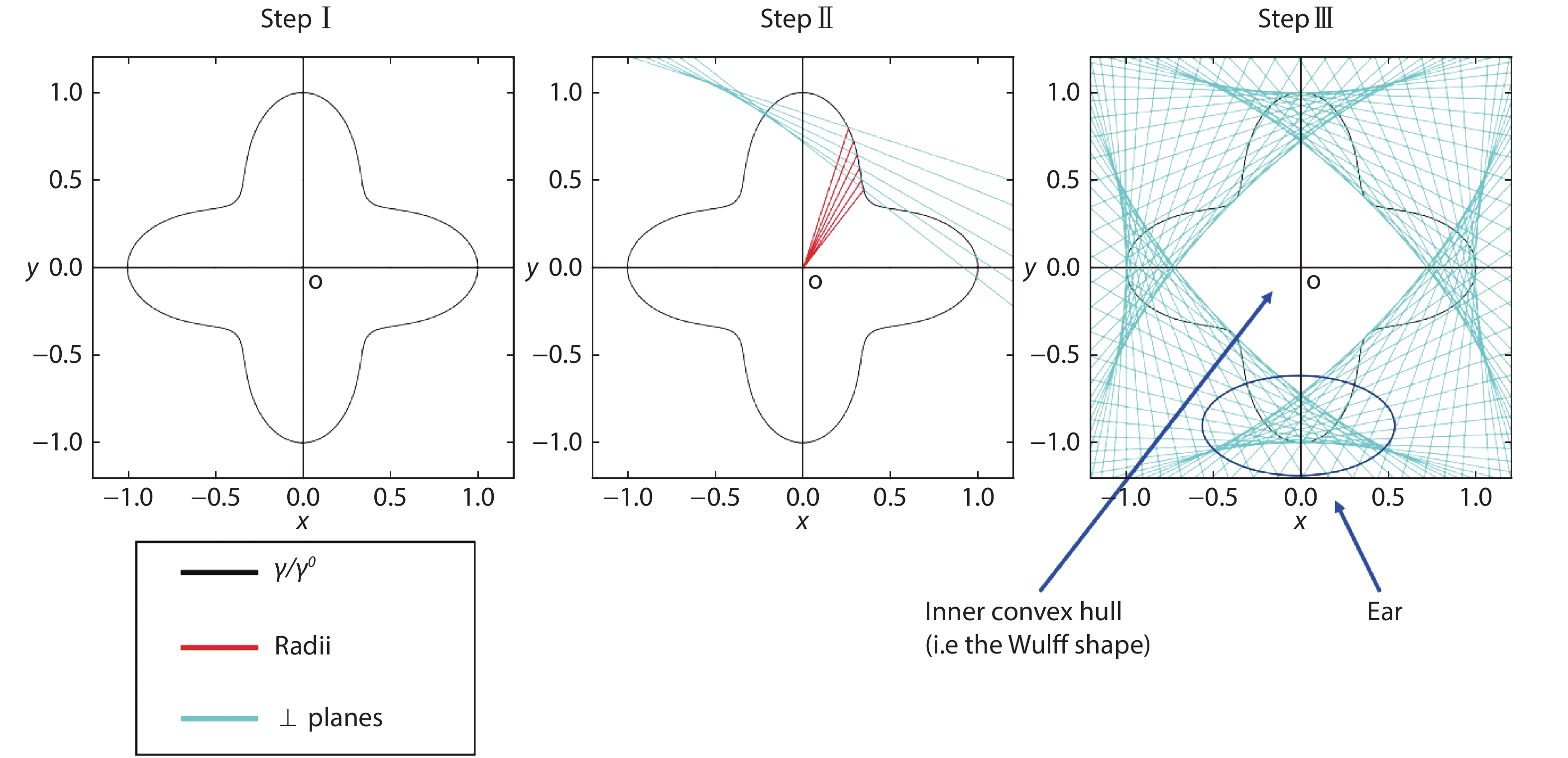
 DownLoad:
DownLoad:
